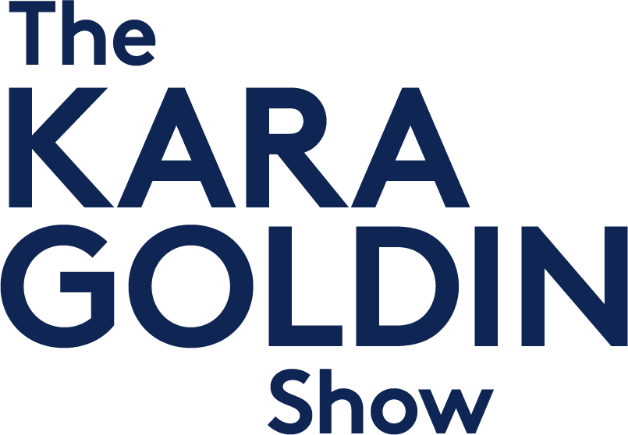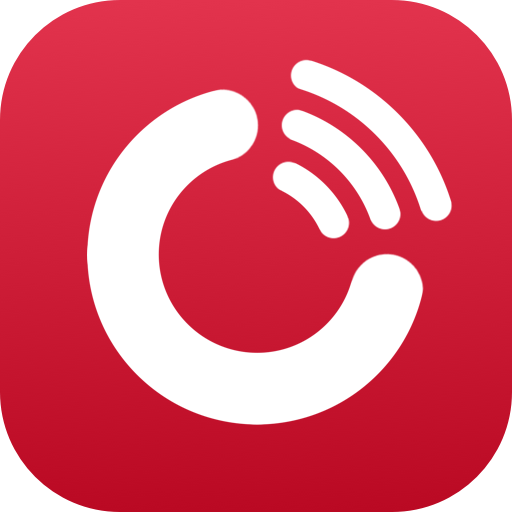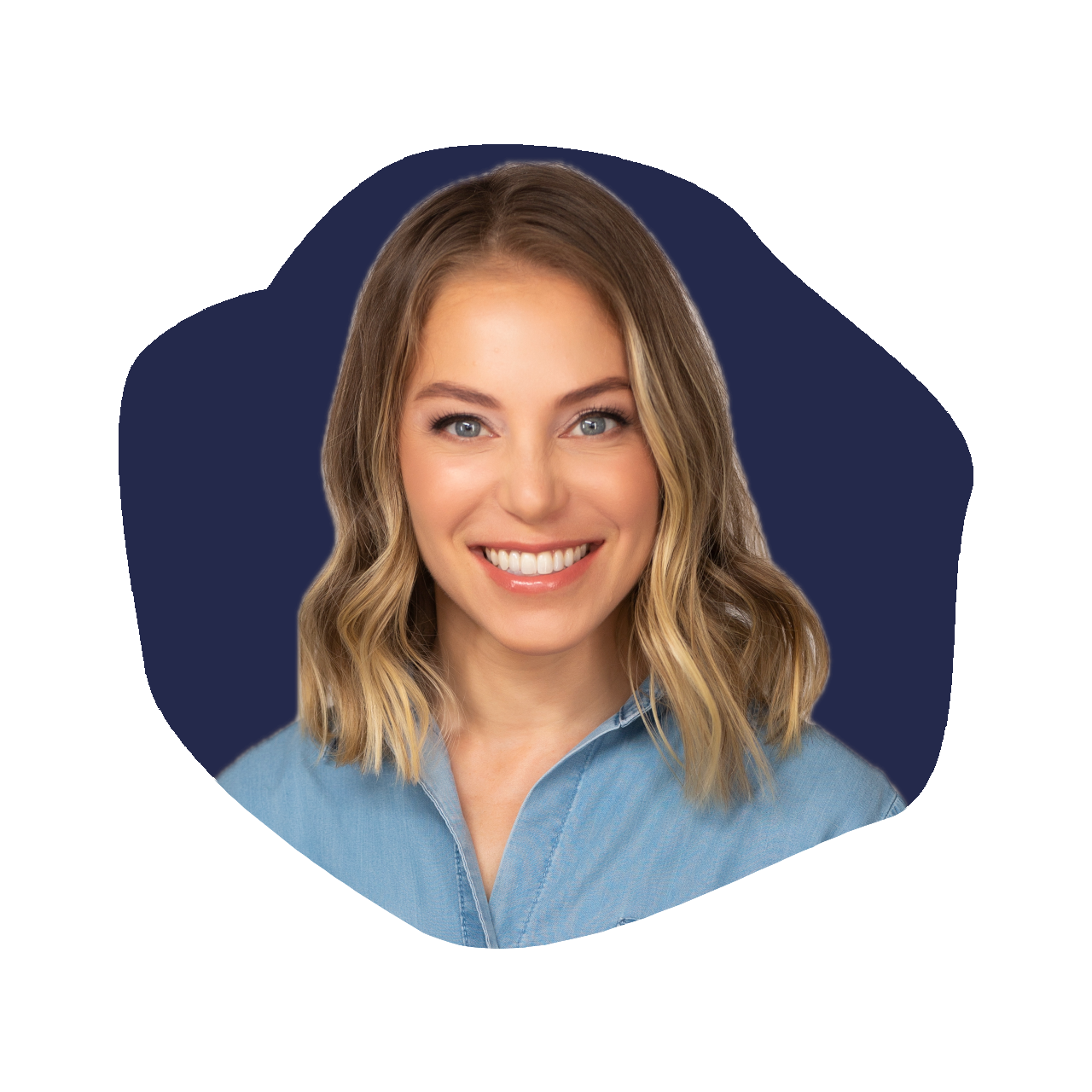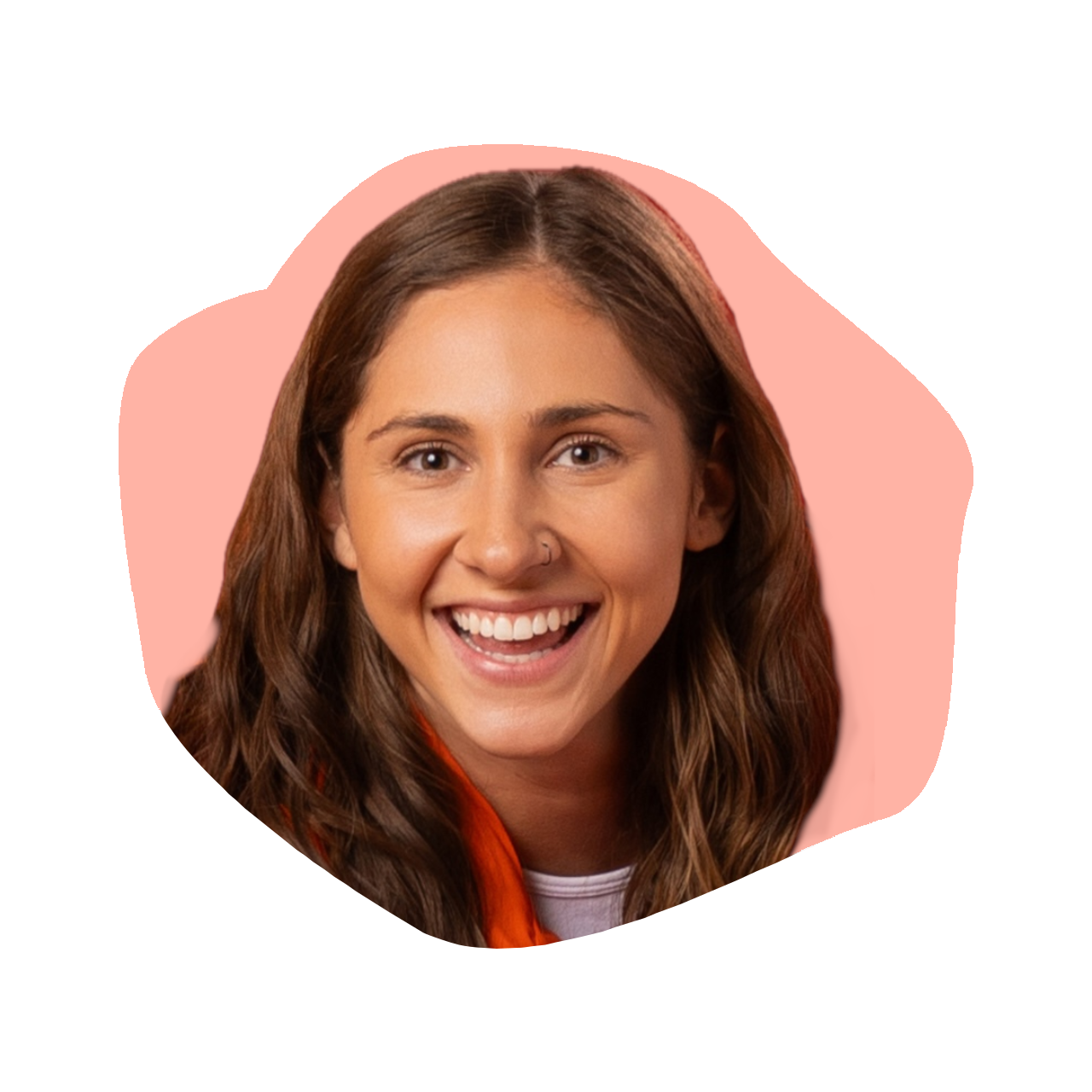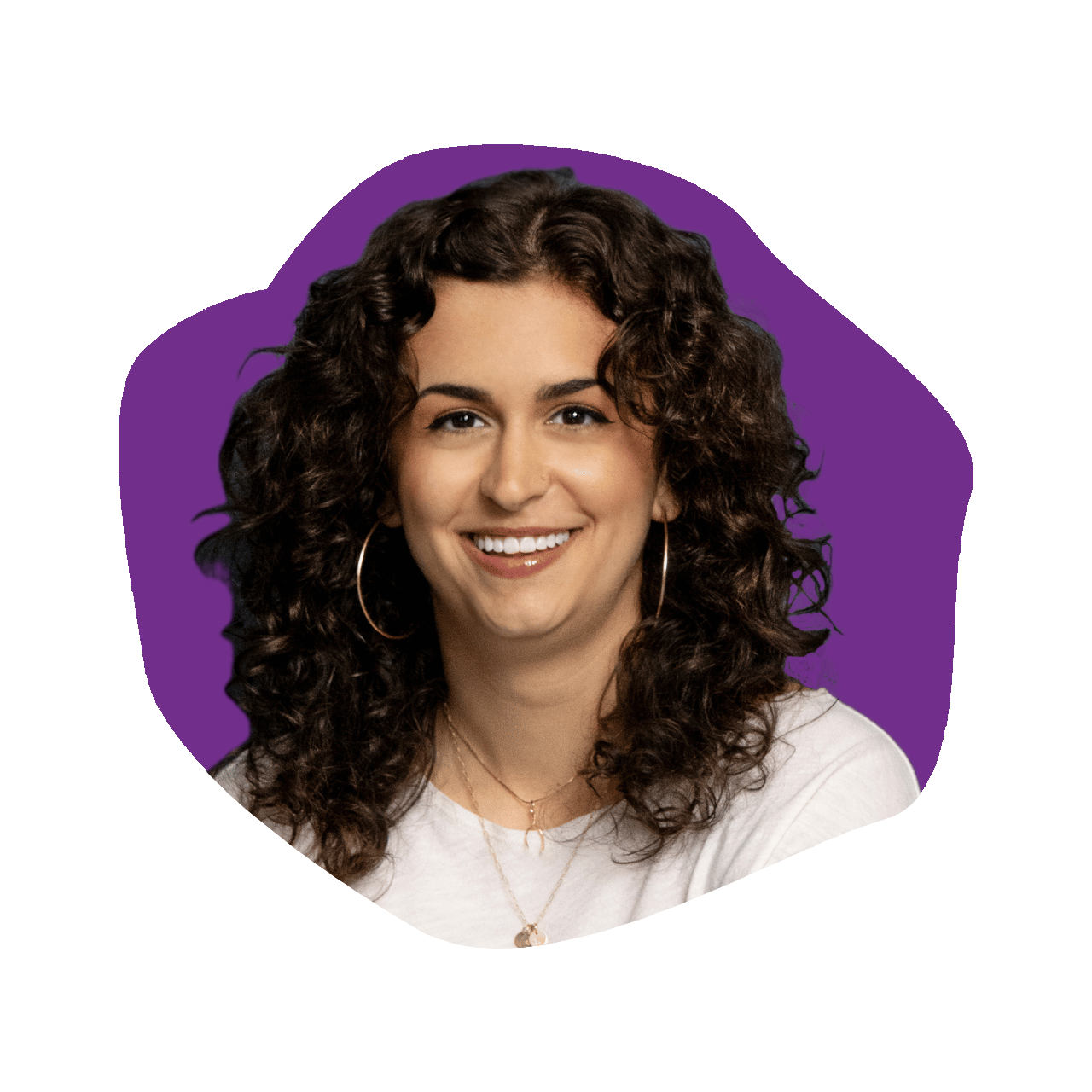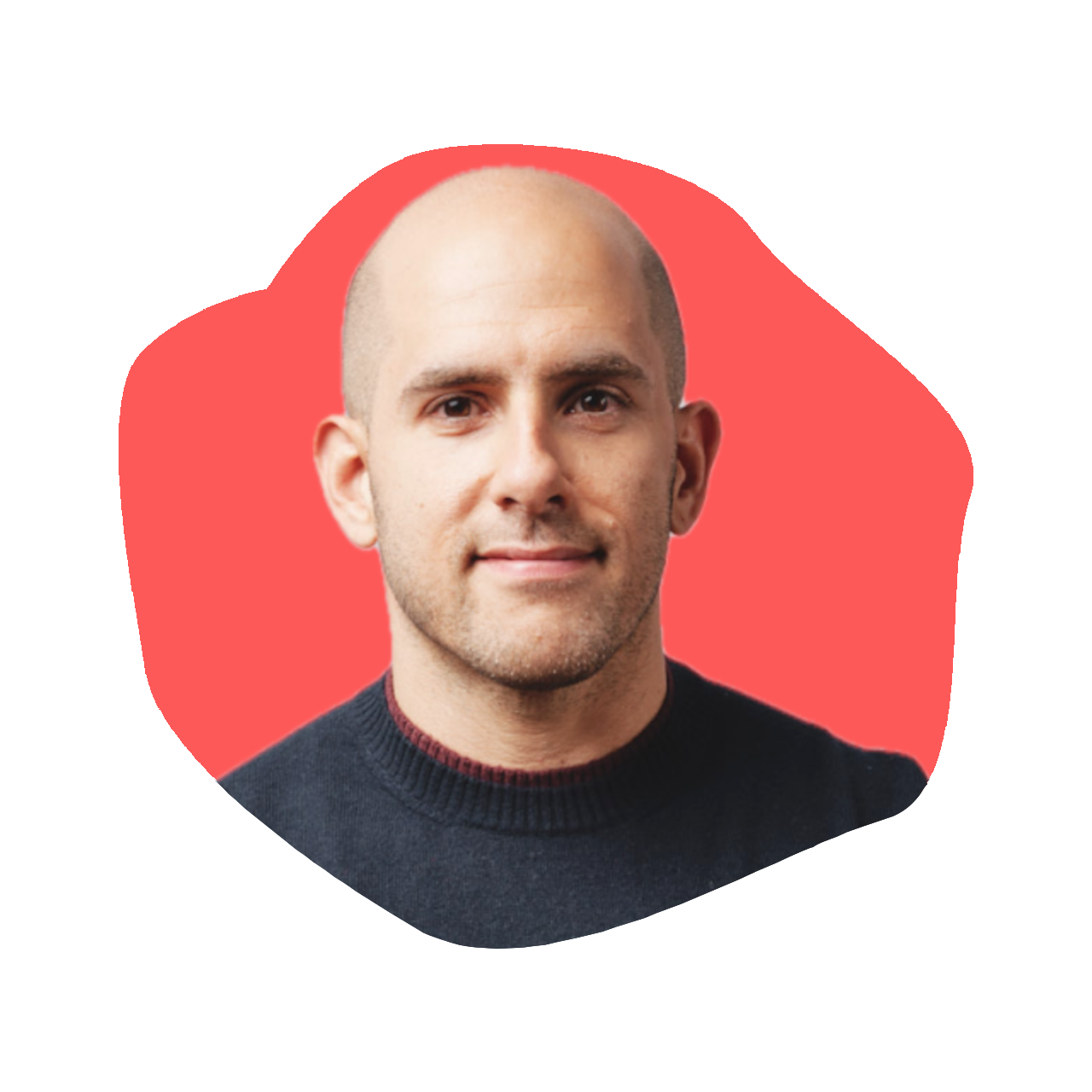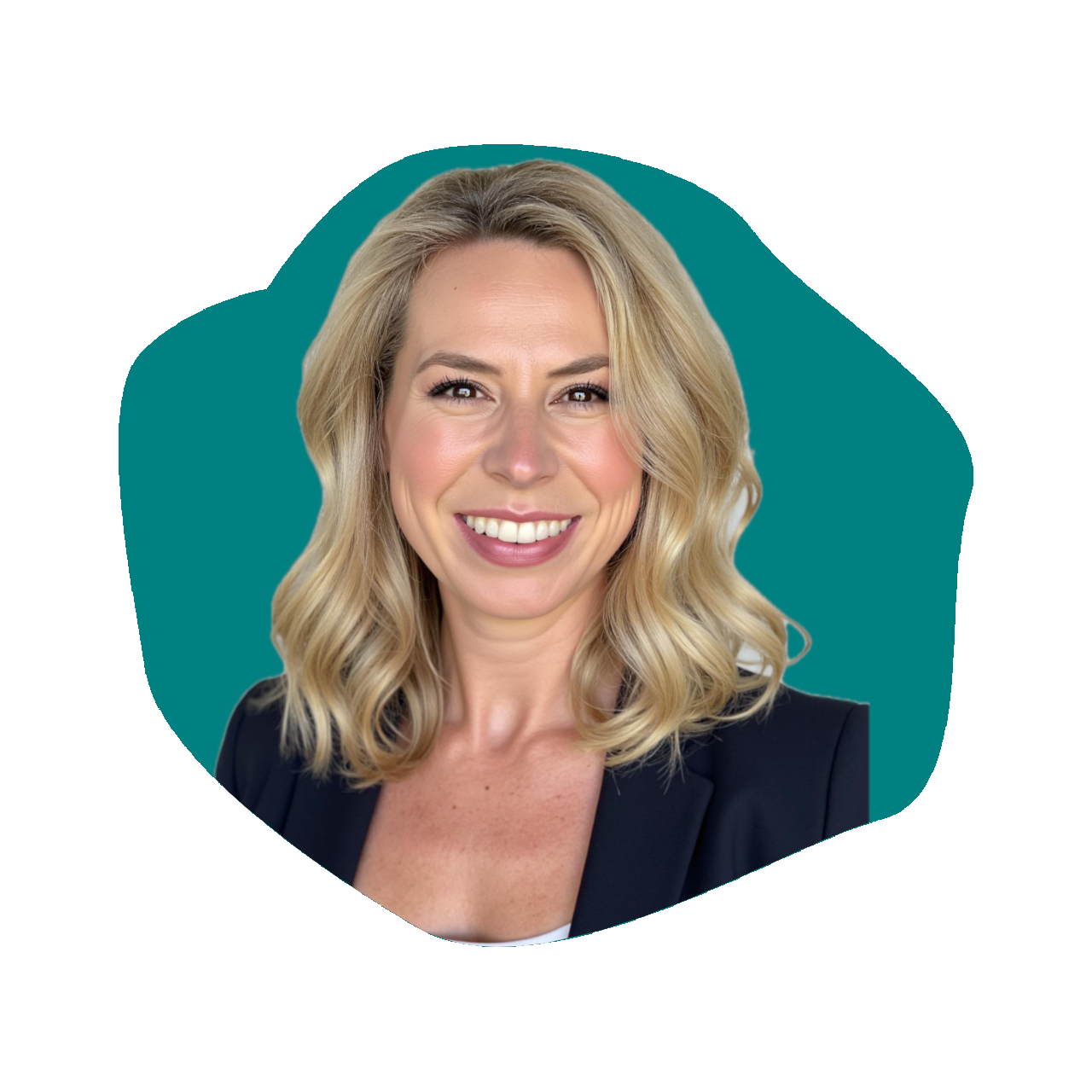David Istier: Founder & CEO of gutzy Organic
Episode 687
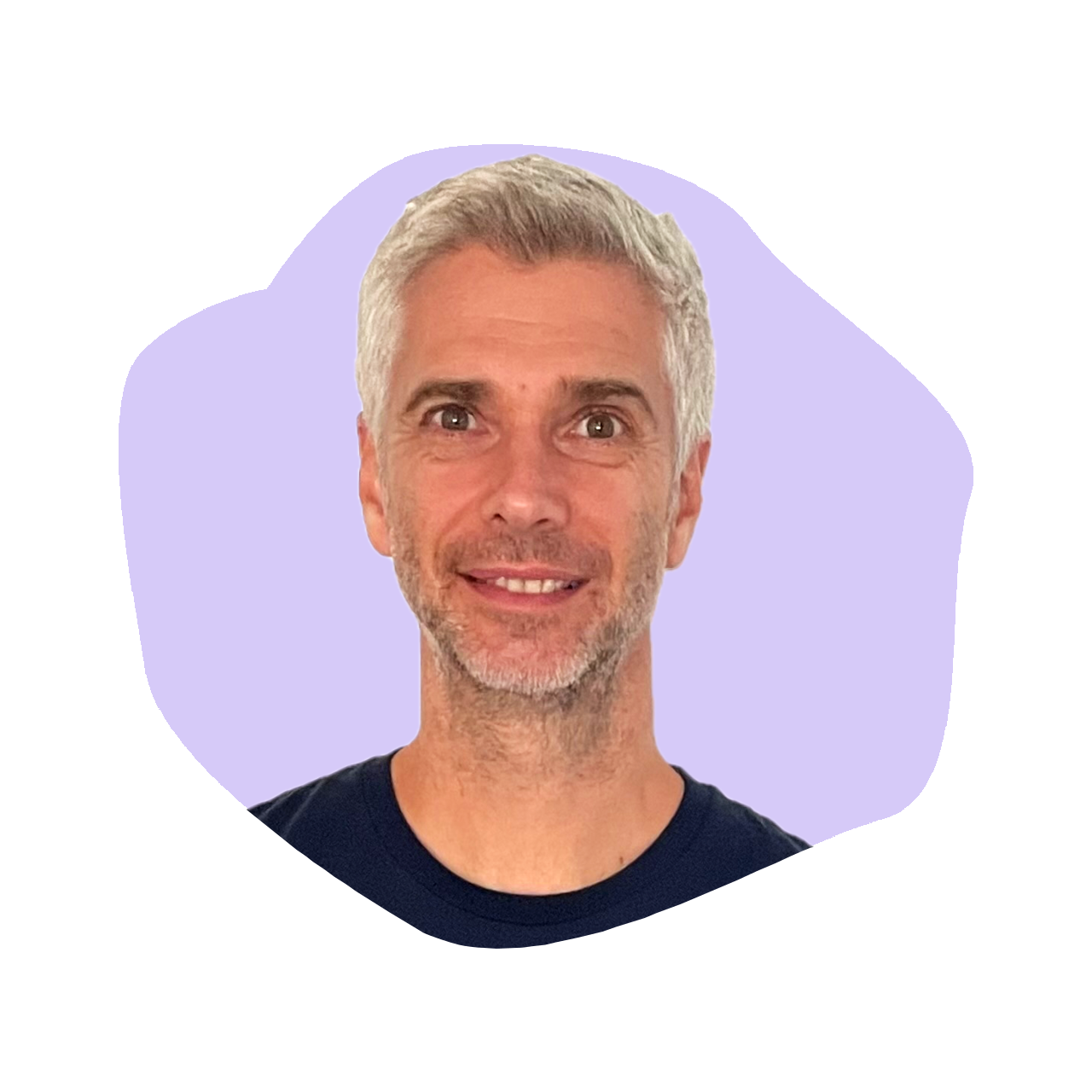
On this episode of The Kara Goldin Show, we’re joined by David Istier, Founder and CEO of gutzy Organic—the functional food brand on a mission to close America’s massive fiber gap and bring gut health to the forefront of wellness. With only 5% of Americans meeting the recommended daily fiber intake, David is leading the charge with clean, convenient snacks that make it easy—and enjoyable—to take care of your gut.
In our conversation, David shares the inspiration behind launching gutzy, his journey from helping scale GoGo SqueeZ into a billion-dollar brand, and what it takes to build a food company that’s not just trendy but truly transformative. We explore the science behind prebiotic acacia fiber, the importance of functional food in public health, and how gutzy is helping shift cultural attitudes about digestive health—one pouch at a time. He also gives us a behind-the-scenes look at the challenges of educating consumers, staying mission-aligned, and scaling smart in a competitive category.
Whether you're a wellness-focused consumer, a founder in the CPG space, or someone who cares about what goes into your body—this episode is packed with insights you won’t want to miss. Now on The Kara Goldin Show.
Resources from
this episode:
Enjoying this episode of #TheKaraGoldinShow? Let Kara know by clicking on the links below and sending her a quick shout-out on social!
Follow Kara on LinkedIn – Instagram – X – Facebook – TikTok – YouTube – Threads
Have a question for Kara about one of our episodes? Reach out to Kara directly at [email protected]
To learn more about David Istier and gutzy organic:
https://www.gutzyorganic.com/
https://www.instagram.com/gutzyorganic/
https://www.linkedin.com/in/davidistier
https://www.linkedin.com/company/gutzyorganic
Transcript
Kara Goldin 0:00
I am unwilling to give up that I will start over from scratch as many times as it takes to get where I want to be. I want to be you. Just want to make sure you will get knocked down. But just make sure you don’t get knocked out, knocked out. So your only choice should be go focus on what you can control. Control. Hi everyone, and welcome to the Kara Goldin show. Join me each week for inspiring conversations with some of the world’s greatest leaders. We’ll talk with founders, entrepreneurs, CEOs and really, some of the most interesting people of our time. Can’t wait to get started. Let’s go. Let’s go. Hi everyone, and welcome back to the Kara Goldin Show. Today. We’re diving into a topic that doesn’t get talked about nearly enough, fiber and, more importantly, gut health. And I’m joined by someone who is on a mission to help change just that. David Istier is the founder and CEO of an incredible brand so yummy, called gutzy organic. And he knows a little bit about this category. He had been working very, very closely on the go, go squeeze, bringing it to the US market. And now he is doing it, not exactly again, it’s a little bit different. And now with gutzy organic, a brand that’s tackling one of the biggest nutritional gaps in America, our lack of fiber, with only 5% of Americans getting the recommended daily fiber and just one in 10 eating enough fruits and vegetable gutzy is perfect for going after this market. I can’t wait to hear all about the backstory and how he’s gone from idea to scale, going from a big company to starting his own. So welcome David. Super excited to meet you and to have you here.
David Istier 1:56
Well, thank you very much for having me, Kara, fan of your podcast. So for me, being on the show is is a is an honor.
Kara Goldin 2:05
Thank you so much. Well, let’s kick it off. So just talking about the brand, gutzy, organic. How would you describe it to someone who’s hearing about it for the first time?
David Istier 2:16
Right? So don’t like to compare this, but we talked about Go Go squeeze. So I will say this is the adult version of GoGo Squeeze. As far as you know, it’s in a pouch, like in a fruit squeezer patch format, similar by our product as flavors and blending of fruit and veggies that appeal probably more to adult that was, that was a goal in mind, per se, at the end of the day, we are in the fresh snacking part of the store as well on the perimeter. And as you mentioned before, the gap with fiber and and people not eating enough fruit and veggies, we we are trying to complement, and that’s why we are in produce in the refrigerated section, with delicious organic blended fruit and veggies that have this super powerful thing, which is fiber, which is super underrated, and also that people don’t eat enough?
Kara Goldin 3:03
Yeah, definitely. So you had a career working in a large company. You had also worked at other food and beverage companies, but what inspired you to really go to a company that was nothing. It was just an idea and a concept to launching something. You had other choices. You could join a company, grow a company, continue on your path, but you decided now is the time that I’m going to go and do this. Yeah,
David Istier 3:32
no, that’s a great question. I think you could call it madness, maybe, or being a bit ignorant to arrogant, I don’t know, a bit of, a bit of, or maybe, no, I had some experience in Europe with, you know, different food companies in corporate, you know, like England and corporate America as well when I moved here, and I just, you know, the GO, GO squeeze experience for me, although it was corporate, it was kind of piring and being the First fruit squeezes in the US, you know, in 2007 the format of the patch didn’t exist, right? And so that was kind of a little bit entrepreneurial in a way, although it was backed up by a big French food company. And seeing that journey of first struggle, because we launched go around, you know, 2008 there was an economic crisis and so on. So the first two, three years were a bit like tough, but then it just took off. And so when I saw that, I was like, Oh my gosh, this is pretty amazing. You know, I I could do that for myself. And at the time, you know, when I was a go, go, many parents were like, you know, it’s a shame there’s nothing for us in that pouch for adults. So that was the start of an ID. And then I was like, why not? Why not jump and do it so you see, God, see today, as you know, this kind of adult pouch. But we did start with another product in a pouch before. And you know, I know you, you with hint, you, you look. Vitamin Water and so on, and doing things better. And for us, initially, the idea was simple. It’s still similar to the premise of making people eat more fruit and veggies, but we wanted to kind of become initially, is vitamin water or fruit snack, so fruits and vitamins. So that’s how we started it, right? But 11 years ago now, actually believe it or not, and that was a great idea, just didn’t work out at
Kara Goldin 5:26
the time. So interesting. So I’d love to dig into that a little bit. So you’re so you launch with that, and was it the same company, or did you end up shutting that down same
David Istier 5:39
company? So stay true to my early investors, most of them and also love friends and family. Invested initially, I put all my savings, and we quickly realized that one, we had tons of problem making the product right, because it was in a patch as well, but it had little chunk of fruit. And what we quickly realized was that people in a patch don’t really appreciate, like, chunks and things, and it was hard to manufacture. It was not cheap to manufacture. Initially, we started in Canada. I mean, all the things that could have gone kind of wrong initially went wrong, right? And so at that time, you know, after putting all my savings and so on, I had a lot of pressure. I really believed in the pouch for adults. I felt we did not have the right ingredients or the right formula, if you will. And, you know, it started to dawn on me, and a lot of pressure, and I was becoming, I probably was close to depression at that point, because I was seeing where this was going, and it was not going to be pretty ending, you know. And started to have physical reaction to this thing, and rashes, acid reflux, you know, it’s a whole thing when you don’t take care of yourself, you you don’t eat properly, everything kind of fall apart. And actually, through that journey and that low point, it’s actually what allowed me to go and see an herbalist and discover the power of plants and gut health to in my body. And that’s when Godzilla became, kind of came to life from a failure rebounding to potentially making something work. So
Kara Goldin 7:17
that’s amazing well, and I think it’s, it’s finding those moments when things are really hard, right, and figuring out, is there something going on that I can actually potentially turn it into a business. I mean, that’s a story that many people it’s not necessarily their front PR story, but you end up hearing this a lot, in a lot of different categories. So most people hear gut health and think of probiotics, but what you’ve focused on is the prebiotic fiber. Can you talk a little bit about that?
David Istier 7:52
Yeah, and I know, you know, like it’s also our kind of buzz word, right? Probiotic, prebiotics, postbiotics, you name it, and you know, the most of the people. And still to this day, I think people know probiotics more because it’s been in dairy for a lot longer. Probiotics started, you know, started to kind of trend, really, in the last four years with prebiotic soda, and this growth in sodas, you know, where it became more popular. We were actually way before that. We started with gutzy. We started, you know, talking about prebiotics when we pivoted. And at the time, prebiotics were really in the supplement are, you know, you could get them into Metamucil or Benefiber like, you know, not super sexy kind of, in powders and stuff like that. And we, we’ve got the, we were one of the first to actually take prebiotics, which are plant fibers, and use the queen of prebiotic, which is Acacia from the acacia tree, which we love at gutzy. And we can talk about, why, yeah, you want at some point, but, and we put it into a food format, and we were like, you know, people don’t eat enough fiber, fibers in fruit and veggies. There’s already fibers there. Let’s start with that, and let’s supplement it a bit with something that’s supernatural, that has varying properties for your gut. So that’s that’s kind of it started in 2018 way before everybody jumped onto prebiotics and all those things. Now.
Kara Goldin 9:19
So you mentioned the acacia tree. I’d love to hear a little bit about the fiber that you’re using for that. Yeah.
David Istier 9:27
So the majority of people, they use first, or they usually inulin, you know, in their product, you know, like Jerusalem artichoke and so on and so forth. We at Gazi decided to use organic acacia and Acacia actually come from the acacia tree, from the sap of the tree, which many come from Africa, and African and Indian population. Have you have been using this for centuries to use themselves and to also fuel themselves, per se. So it’s it’s been around for a long time, and. It is very expensive. That’s why, a lot of beverages, they don’t put in the formulation. It’s a bit trickier to blend sometimes, maybe as well. So we call it the queen of prebiotics, because for two for few reasons, one, it’s it’s super pure, and it’s got about 400 scientific studies behind you know different things from you know the production of short chain fatty acid, certain short chain fatty acids, which are key for immunity and gut health, also the growth of beneficial bacteria. It’s a low glycemic food as well our ingredient per se. There’s a lot of stuff around the connection with the mood as well. So it’s really a beautiful scientific research ingredient. And I think the biggest thing too, is it’s a very tolerable source of fiber. A lot of people say, you know, with IBS or certain gut health, gut condition, you can, you know, you have to be careful with fibers when it depends the type of fibers. And Acacia is actually beautiful for that, because some some fibers will give people bloating or constipation or gas, or some of those things. You don’t get any of those effect with Acacia. That’s why I call it the queen of pre violet, per se. So I
Kara Goldin 11:17
love it so functional foods, it’s a crowded space overall, whether you’re in a pouch or not in a pouch. How do you cut through the noise with gutzy? I mean, it’s, you know, sampling and marketing and everything, right? It’s just, how do you do that as a young brand, and especially when you’ve been at a large company, right, where there’s always a budget available. You have trade offs that are going on inside as you’re trying to figure this out. How do you grow it? Yeah, no,
David Istier 11:47
it’s tough, and it’s super crowded, right? The shelf space is very expensive to get on and to stay on. It’s even more expensive, especially, I think the last 1015, years, we’ve seen like the amount of capital that’s required now to stay on shelf as a startup. You know, it’s a lot. And so for us, we’ve got the, I don’t know if it’s our European heritage, but we decided to do things and it’s in our name. I think it’s in our DNA. It’s in my DNA. Always been a bit different, you know, trying to not just do things differently for the sake of doing it differently, but try, not trying to go with trans, but trying to do what you really, truly believe. You know, it’s right. And so we started with, you know, we could have gone frontal when we launched gutzy and the product before, in the patch for adults, and say, Hey, we’re gonna go every patch is in grocery. We’re gonna go in grocery. We were like, no, we want, if we want to be making people eat more fruit and veg, where are they? You got to go to the produce section. So that’s what our first move, right? That was a bit different. We were one of the first refrigerated kind of pouch snack, a nice farm as well. That has been very successful for kids, right? We were one of the first to go in that avenue and say, we’re not, we’re gonna go in the perimeter where it’s fresher and there’s more premium perception. And you can sell that in that, in that, in that area. And then I think the second thing is, before you go and just lead with functionality, you got to make sure that. And again, back to the European heritage, food needs to taste good. It needs to make you feel good, you know. And it’s not sacrifice. It should be something you enjoy doing. So we worked a lot on our recipes, and it’s a very and that’s why, also we are in refrigeration, because it’s very tough to fine tune, you know, subtle kind of fruit and vegetable blending when you don’t use any natural you don’t We don’t even have natural flavors in our product. We don’t have natural colors. There’s nothing of that stuff, right? So really perfecting the recipes before it does you good and makes you need to make you feel good, right? So that was the other thing. And then I think the patch was so unique in fresh that it stand out on its own right initially. And so we went not national. We decided to launch where we’re on the East Coast, and start regional with, like, a strong account, like we’re in the Northeast. So Stop and Shop and Anna Ford Wegmans, you know, those market baskets, those good accounts, and really tested stuff out, you know, what’s working, what’s not working, and just like, kind of adjusting, you know, our mix to make sure that we we know how to work before we want to run in the process. So it’s been, you know, it’s been a slow process, and most people are very impatient nowadays, but it’s paying off now, actually, voice
Kara Goldin 14:41
that’s, that’s terrific. So would you say to a founder who’s thinking about launching really focus on a region versus actually going national if they get the opportunity?
David Istier 14:52
I think, I think it depends the channel as well, right? If you go, we decided not to go natural. I. Because at the time, you know, natural kind of evolved from what it was when, you know, you look at 2005 and stuff, it was a whole different ball game. Nowadays. You know, everything is blended in on channel, but you know, you can still go, if you if you can get in, I mean, you could go national with full food. It’s the best stuff, right? Because that for sure. But then if you can’t do that because it’s tough to get into all foods, then you can take the regional route and pick a few partners that know how to deploy with brands and also believe in innovation, and you don’t have to pay tons of sliding fees to get in, or potentially, you can work directly with them instead of going through a distributor. That’s what we did, too. You know, 95% of our business is direct to retailers. Makes a big difference. Yeah, that’s
Kara Goldin 15:47
terrific. And then do you have a lot of merchandisers to make sure that it’s all getting on the shelf?
David Istier 15:53
So that’s why partnership with retailers is key. We don’t we have we, believe it or not, we’re under 10 people, so we are super lean, and so we work with brokers and their merchandising team. But unlike beverages, I know you, you have a beverage background, a snacking and and food is a bit less brutal and less a bit less competitive when it comes to being pushed out, and you have to keep coming back to put your product on the shelf. So in that way, we are bit lucky with food, right? The obviously, the volume are not the same, and that goes with the territory. But no, yeah, we do work with very good brokers and and this is part, again, of a different approach. When I was at GoGo Squeeze, we had one or two big brokers, at least one per channel, national in produce. It’s very different. It’s a bit the old days. It’s a bit like daily you have to really work regionally with the best brokers for each channel and each distribution point. And so it’s a patch, right? And as part of that, you get great partners too that are very strong.
Kara Goldin 17:03
So when you launched gutzy, and maybe you learned a lot, you learned a lot in the first I guess you know when you were first starting out, but when you re launched, I should say what, how many SKUs Did you launch with, and how is that different today?
David Istier 17:22
So, yeah, so we started again, like, we try not to over skew something as well, trying to make sure that we have a core. And we did the same thing with Google squeeze initially. We didn’t start with, you know, tons of SKUs we had, like the top three or four best sellers that we knew will be, like, a bit more appealing to a border group of people, and that’s what we did with gudzi too. We we had four flavors when we started, and to these days, they are still our best, our best sellers.
Kara Goldin 17:50
That’s that’s incredible packaging. Is it significantly different than it was, than it was when you relaunched?
David Istier 17:59
Yeah, yeah, it wasn’t. It was not. I think packaging is something that, you know, it’s very subjective when it comes to design. And we, we did, we did make quite a lot of mistake, and we we learned, and we keep pivoting and being pragmatic. We just went through a rebranding, actually, less than a year ago, and it was basically driven by one of the major retailer in the country that was like, we are very interested in your in your story and the name and everything, but your packaging is super old fashioned. And I compare this to tech Naked Juice versus Suja kind of thing, in a way. And we were kind of Naked juice and not enough Suja. And we were kind of appealing to an older demographic, in a way, but the new generation that are not drinking prabilic sodas, Gen Z and and so on, they were not really attracted to a design. And we learned, you know, we learned to adjust and and initially it was like, wow, you know, it’s not doing bad, but it was, it was we were undervaluing what we could do with the name, with our packaging. And so since the pivot our change, modernizing our range with what you see today, our sales have really accelerated, and it’s really responding to much broader group of people now. So you live and learn now every day, yeah,
Kara Goldin 19:21
and you did a great job on the packaging. I remember when we were first launching hint, we wanted a clear label, because it was water, and we wanted people to be able to see that it was water. And, you know, we had it on the shelf. We had been testing it, but we hadn’t really paid attention to where we would be sat on the shelf in a perfect environment. And so we were typically getting on the shelf when we were getting good opportunities right next to like vitamin water and colorful products. And all of a sudden they just we were lost. And so we didn’t learn this until a couple of years later, when we. Actually in New York City, had to, had to change our labels that, because of a bottle deposit law, we were going to get fined, and we had, we couldn’t get the clear film. And so anyway, we ended up switching it out, thinking, Oh, it’ll be a temporary thing. We’re not really happy with it, and we saw sales go up enormously. I mean, it was just it was insane overnight. And it was like an overnight mistake that we had made, that we never would have made, hadn’t had it not been for this bottle deposit law in one city. So then we went and changed it across the US. But it’s amazing what great packaging can do, and all the different factors,
David Istier 20:45
yeah, and to your story, to your story often, you know, we see challenges with startup as problems, but they are only like sometimes, messages that you need to take, indirectly or directly, that to make, to make you change something. Yeah, right, and at the time you don’t really see that. But if you pay attention to those with gutzy, it’s been like series of journeys like that, where we did little things that we didn’t want to do initially, that turned out to be what we needed to do, and we didn’t really know at the time, right? So what has
Kara Goldin 21:17
been the biggest challenge for you in growing gutzy? I
David Istier 21:21
think the biggest challenge when you are young startup that is not that doesn’t have, like, tons of capital in their pocket, you and or as a celebrity on their on the marketing team, or something like that, sometimes it’s hard to get distribution to scale up fast, and sometimes it’s not a good thing because it’s a very quick business. As you know, you need to scale up because in order to be profitable, you need scale right. But at the same time, what I’ve seen, we were always ready to bigger account, and we did. There was a few times when we had bigger account where it was too early. And so things happen the ways they need to happen for the right reason, even with distribution. And I think now we are really after 10 years at this stage where, in my mind, I’ve been ready to scale up for like 10 years, right? But it’s only happening now with the timing and our product and and our learning and our customers and our consumers, that we are ready to really accelerate, which is exciting, because we’re about to launch with Walmart nationally. Very exciting, which I dealt with them at Google before. So people are like, Oh, be careful, Walmart. But we’ve been ready for Walmart for at least two years, I think, yeah,
Kara Goldin 22:42
that’s That’s amazing. Speaking with consumers, I’m sure you’re constantly looking at emails or customer service, things that go on in the company. It’s always those stories. I always found during the most challenging and most difficult times that you would maybe find one of those stories in your inbox that really helped you to know that I’m doing something really great, right? I wish that was my whole life, right, that I get all this like we love gutzy and this. But can you share one of those stories where you felt like you really had you knew that you were doing something really right?
David Istier 23:21
Yeah, you know. And it’s initially when you start things take time, and you’re like, my gosh, are we doing the right stuff? And so on. And I still get all the inbound inquiries to me, because I believe that’s the pulse of the business, to know what’s going on with consumers and what people are either telling you that you’re doing great or things that you’re not doing so great, right? And really, what amazed me with reading stuff, even through the last four or five years when we’ve accelerated, has been really like the testimony of people that had some kind of gut issues, you know? And you look at the US now, I mean, 2/3 of America and have some kind of gut discomfort. It goes from, you know, not digesting your food properly or a bit of bloating to more serious condition, like IBS and and other things. And just looking at reading consumers really saying, Hey, I, I have, my family is very busy, and we don’t have time, and we I’m trying to get, you know, my husband and my kids and me to eat, like, fruit and veggies and fiber, and I have digestive issues, and your product has an amazing impact on my life. And we get those all the time, and that’s when you’re like, Okay, this is real. It’s not just, you know, we have a fruit snack, and it’s doing something. It’s really, it really kind of like validate what we set ourselves to do, right, which is focusing on gut health, not in a complicated, like, Buzz worthy, way, but with simplicity, which is in nature, with fruit and veggies that are organic. That happens to have fiber, you know? And we get those, I guess, those every week. And it’s, it’s really comforting, because most of the time, you’re like, are we having an impact or not? And the answer is yes, and that’s what it’s exciting when, especially when it’s not going so well, and every week you have some kind of challenges, keeps you going, right? You like how to remember that so
Kara Goldin 25:23
no, definitely, when you think about your entire journey, which I mean, I always say that I wish maybe one day with AI, we will be able to download all of those lessons and and stories along along the way, that that you have sitting inside of you. But if you had to think about one thing that you want people, maybe just from your journey to be inspired by, that they could walk away and remember, what would that be?
David Istier 25:56
Gosh, so many things. But I think the biggest thing, and I had to dig deep with that. When we when we were we had the first product, that energy, fruit that didn’t work so well. What we were lacking when, when I started initially, was purpose, and having a sense of purpose with with a vision and purpose became what I went through when I was down, you know, during this hardship time and discovering, because a lot of ingredients you see today stem from that herbal journey, you know, organic, ginger, organic and the lion, all this kind of, like gut healing plant foods really, kind of is in our product. And for me, that became the purpose of and kind of was the connection, and that’s why we are called gutzy, and gutzy as the name is really about. It’s really the DNA that I started when I was a little kid in France. Growing up in the southeast, I picked up a little a basketball instead of a soccer ball, which everybody played. And I became a fan of American sport. And that led me to, you know, having my first job abroad in England, not in France, and all this journey of being gutsy and and, you know, and just kind of like going and trying to find what you love and find some kind of passion and not giving up and having as a resilience to keep going. So for me, this is really gutsy. Is my purpose to be gods in life and trying to do something that, you know, people are like, what does I’ve never seen that before, and a bit of a war factor that’s positive. It’s telling people fun, you know, find your purpose. And I know it can be very washy. Washy nowadays, everybody is like online. It’s like finding your purpose in life and all those things. But that’s what keeps you going. If you know it’s going to be hard anyway, you’re going to be knocked down. You know, if you can be pragmatic and you want to grow and learn and pivot and change, you know the journey is worthwhile, and that’s why, you know, I could have given up with Godzilla and energy food so many times, but having a sense of purpose and belief really kept me going, and at the end of the day, that’s the same in everything you do, it’s all it’s always going to take time, it’s always going to be hard. But is it worth it or not? And purpose is what makes it worth right? Your time definitely.
Kara Goldin 28:14
Well, David, thank you so much for joining us today. Gutzy organic is so yummy and good for you, but it’s it’s a really, really terrific product. I love everything that you’ve built and how you’re working to really tackle massive health issues that are so top of mind for so many people today, especially ones that are looking for more fiber in their diet and gut health. So really, really great. We’ll have all the info in the show notes, but gutzyorganic.com, lots of stores, and soon, Walmart, as you mentioned. And yeah. So thank you so much. It’s so nice to meet you and thank you for all of your insights and your stories. Thank you, Kara. Thanks you so much for having me. Thanks again for listening to the Kara Goldin show. If you would please give us a review and feel free to share this podcast with others who would benefit. And of course, feel free to subscribe so you don’t miss a single episode of our podcast, just a reminder that I can be found on all platforms at Kara Goldin, I would love to hear from you too. So feel free to DM me, and if you want to hear more about my journey, I hope you will have a listen or pick up a copy of my Wall Street Journal, best selling book, undaunted, where I share more about my journey, including founding and building. Hint we are here every Monday, Wednesday and Friday. Thanks for listening, and goodbye for now. You.
